#chrysopa
Text

Common Lacewing, Chrysopa perla Canon 400D EF 100 2.8 f/3.5 1/200 iso: 200
#Lacewing#Chrysopa#insects#invertebrates#macro#Wetlands#insectphotography#macrophotography#insect#canon
29 notes
·
View notes
Text
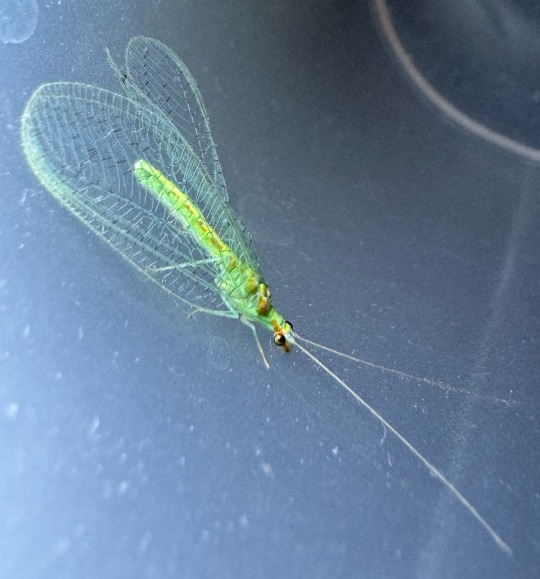

Gorgeous lacewing I had to escort outside. Reminds me of a dragon.
Genus Chrysopa, Northern California
#lacewing#Chrysopa#nature#nature photography#bugs#biodiversity#animals#entomology#inaturalist#arthropods#insect appreciation#insects#neuroptera#vicious predator#natural beauty#fantasy creature#gorgeous#green
7 notes
·
View notes
Text

Art af Guldøje (Chrysopa perla)
Green Lacewing (Chrysopa perla)
#Guldøje#Chrysopa perla#Chrysopa#Green lacewing#Lacewing#Netvinger#Neuroptera#Insekt#Insect#Sommer#Summer#Topbjerg#Garden#Have
1 note
·
View note
Text

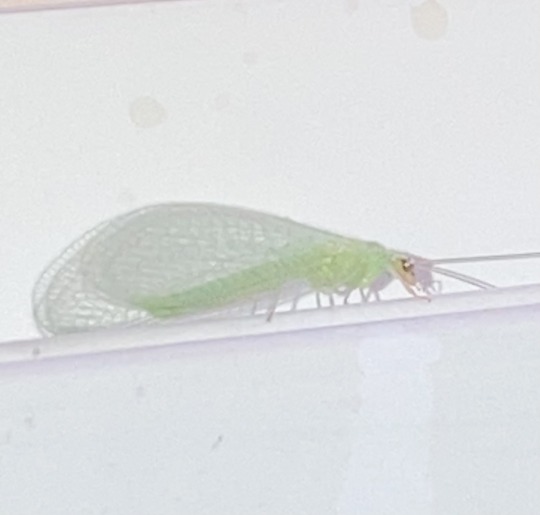
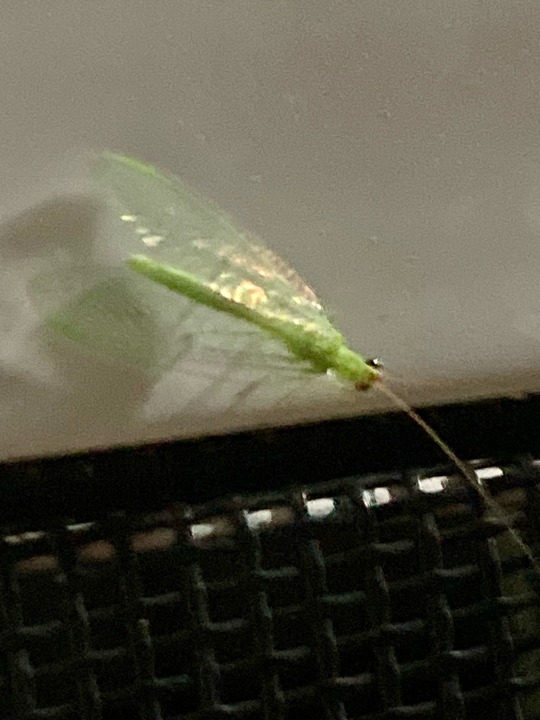
lacewings
6 notes
·
View notes
Text
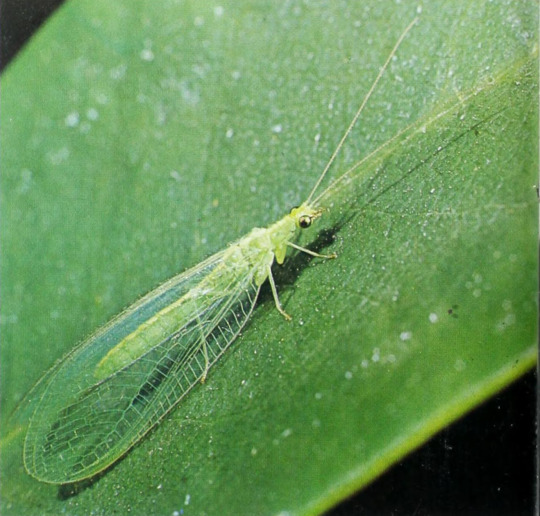
Lacewing (Chrysopa flava)
By: Heather Angel
From: The Complete Encyclopedia of the Animal World
1980
#lacewing#insect#arthropod#invertebrate#1980#1980s#Heather Angel#The Complete Encyclopedia of the Animal World (1980)
56 notes
·
View notes
Text
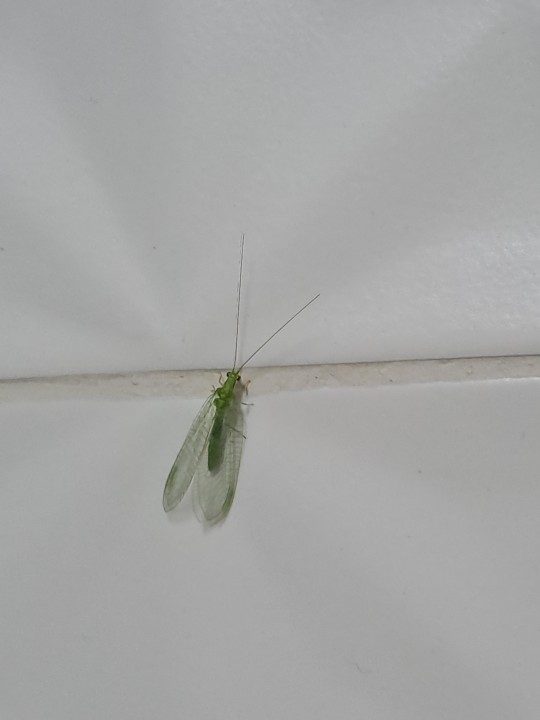
Chrysopa oculata
Golden-eyed lacewing
8 notes
·
View notes
Text

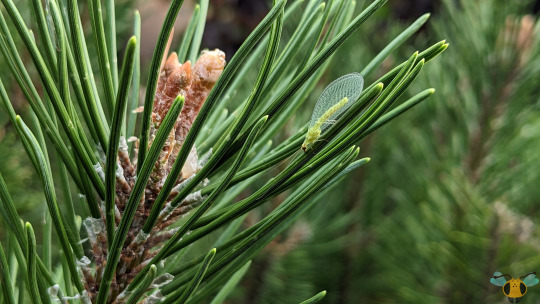

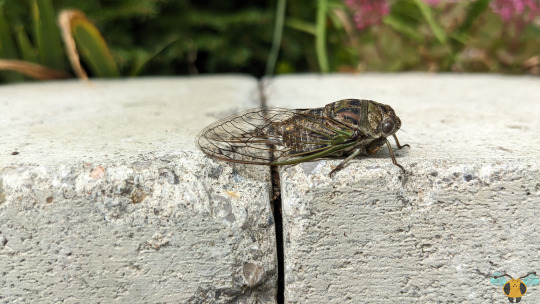
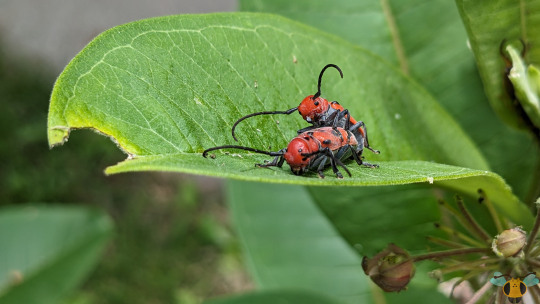
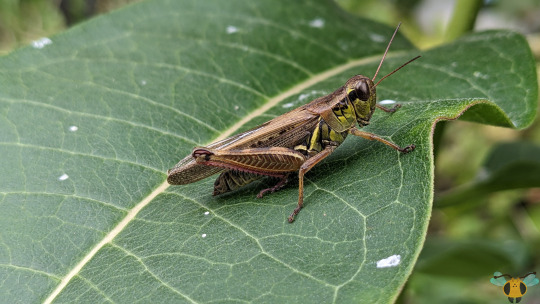
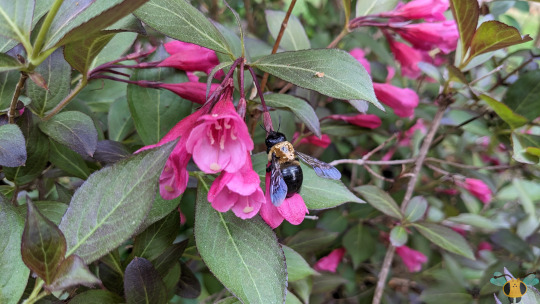
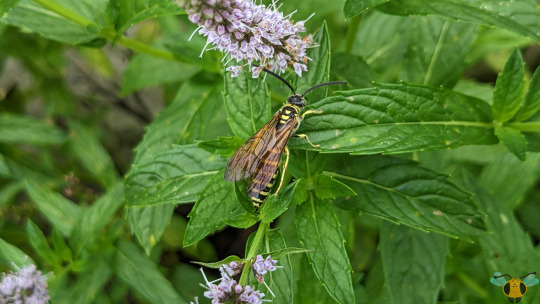
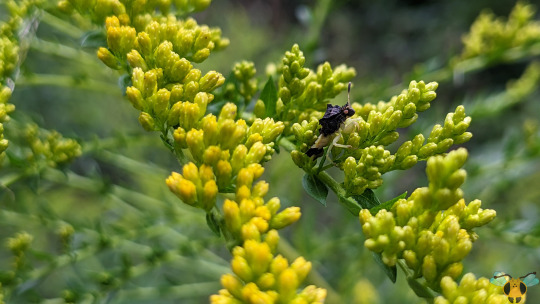
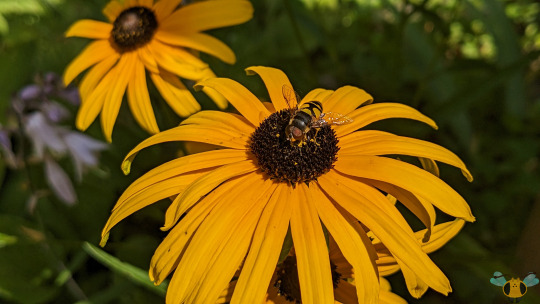
Insect Highlights of 2023
With the new year celebrations scheduled for this weekend, I thought it best to share some of my favorite insect specimens from this year, rather than one single typed of insect. The pictures here haven't been uploaded to the blog in a post, so today they can all share the spotlight. There are many familiar faces here and all of them are incredible and beautiful creatures. Hopefully there are even more insect delights and finds to enjoy in the upcoming year. To ring in the new year, we have the following insects:
Monarch Butterfly - Danaus plexippus - Order Lepidoptera (August 7th)
Green “Goldeneye” Lacewing - Chrysopa oculata - Order Neuroptera (July 26th)
Carolina Locust - Dissosteria carolina - Order Orthoptera (August 20th)
Dog-Day Cicada - Phymata pennsylvanica - Order Hemiptera (August 24th)
Milkweed Beetle - Tetraopes tetrophthalmus - Order Coleoptera (July 9th)
Red-Legged Grasshopper - Melanopus femurrubrum - Order Orthoptera (September 13th)
Eastern Carpenter Bee - Xylocopa virginica - Order Hymenoptera (June 5th)
Five-Banded Thynnid Wasp - Myzinum quinquecinctum - Order Hymenoptera (August 7th)
Jagged Ambush Bug - Phymata pennsylvanica - Order Hemiptera (August 20th)
Transverse Hoverfly - Eristalis transversa - Order Diptera (August 8th)
All pictures here were taken in 2023 with a Google Pixel 4.
Wishing everyone a very Happy New Year and a great 2024! And thank you everyone for making this a wonderful year of insects!
#jonny’s insect catalogue#ontario insect#beetle#butterfly#cicada#grasshopper#lacewing#fly#wasp#true bug#monarch butterfly#eastern carpenter bee#dog day cicada#five banded thynnid wasp#green lacewing#jagged ambush bug#transverse hoverfly#red legged grasshopper#carolina locust#milkweed beetle#2023#toronto#june2023#july2023#august2023#september2023#happy new year#happy new year 2024#nature#entomology
4 notes
·
View notes
Note
trick or treat :D

Chrysopa perla! A cute blue-green lacewing ^^
2 notes
·
View notes
Photo

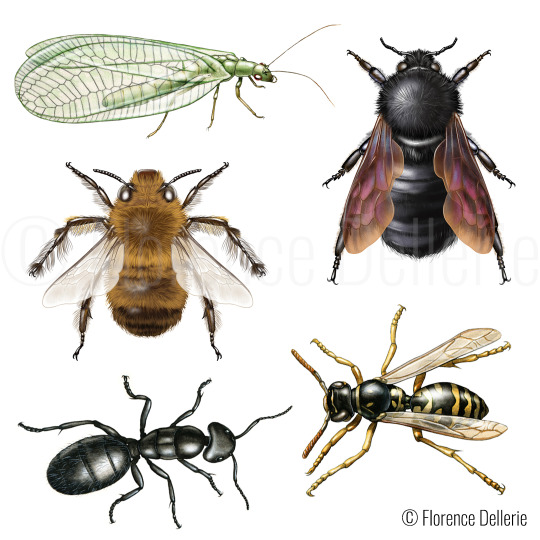
♥ J'ai le plaisir de vous annoncer que mes illustrations entomologiques seront présentées au public lors de l'exposition "Les insectes pollinisateurs font le buzz - Influenceurs de nature" (j'aime beaucoup ce titre ^^) !
► À découvrir du 8 avril au 31 décembre au Jardin de l'Arquebuse (Planétarium) à Dijon. Je vous en reparlerai très bientôt. :)
Insectes visibles sur l'illustration :
• Chrysopa pallens
• Xylocopa violacea
• Antophora plumipes
• Camponotus vagus
• Polistes gallicus
#Dijon#exposition#pollinisateurs#pollinisation#nature#insectes#biodiversité#illustration#Florence Dellerie#scicom#SciArt#sciences#entomologie#animaux#art#artwork
2 notes
·
View notes
Text

Common Lacewing, Chrysopa perla Celakovice-Jirina, Czech Republic June 24, 2012 Canon 400D EF 100 2.8 f/2.5
1/200 iso:200
#Lacewings#insects#invertebrates#Chrysopa#Macro#insectphotography#macrophotography#macro#insect#canon
0 notes
Photo
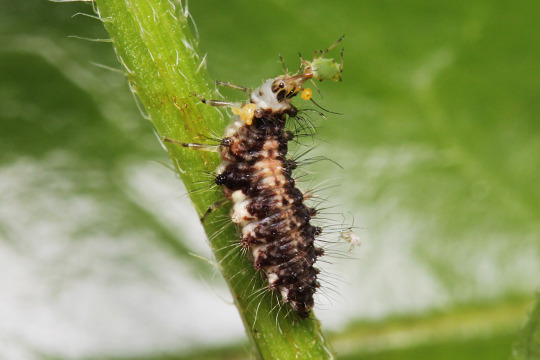
Lacewing larva preying on an aphid.
#lacewing#larva#aphid#preying#eating#nature#insect#bug#Chrysopa septempunctata#Chrysopa#Chrysopidae#Aphididae
8 notes
·
View notes
Photo
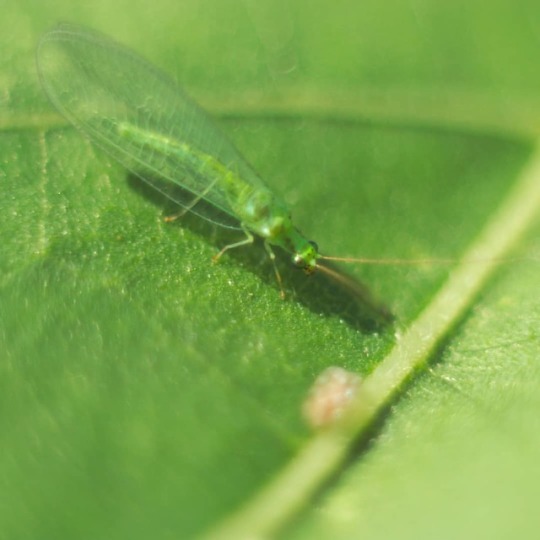
_Chrysopa formosa_ #Chrysopa #Chrysopidae #lacewing #lacewingfly #Florfliege #クモンクサカゲロウ #クサカゲロウ _Corythucha marmorata_ #chrysanthemum_lacebug #lacebug #アワダチソウグンバイ _Helianthus annuus_ common #sunflower #tournesol #héliotrope #maurelle #Sonnenblume #girasol #ヒラソル #ヒマワリ クモンは顔に9個の黒斑があるから。和名の響きは見苦しく「苦悶臭か下郎」だが、学名は美しく「麗しき金色の瞳」。 (総社二子山古墳) https://www.instagram.com/p/ByrfIECAAd0/?igshid=1iiqygliocfx2
#chrysopa#chrysopidae#lacewing#lacewingfly#florfliege#クモンクサカゲロウ#クサカゲロウ#chrysanthemum_lacebug#lacebug#アワダチソウグンバイ#sunflower#tournesol#héliotrope#maurelle#sonnenblume#girasol#ヒラソル#ヒマワリ
1 note
·
View note
Photo
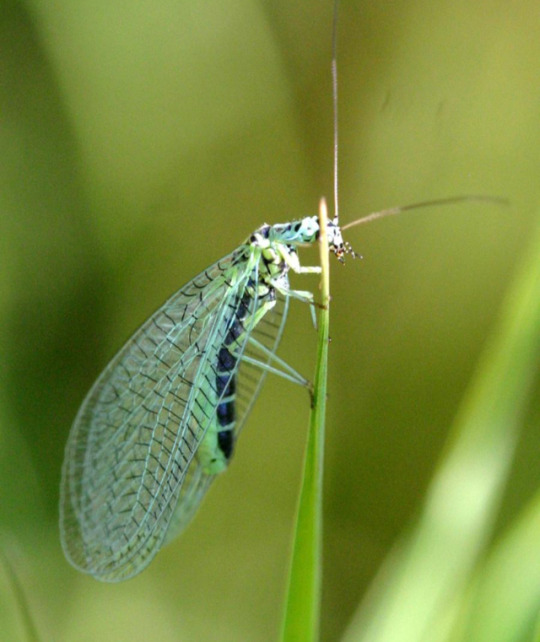
Tracheata Insecta Pterigota Neuroptera Planipennia - Chrysopa perla
1 note
·
View note
Photo
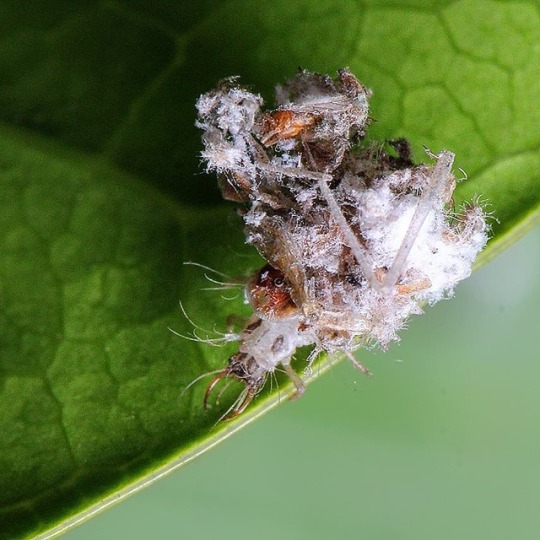
Chrysopa basalis #greenlacewinglarvae #greenlacewing #chrysopa #instainsect #insectmagazine #insectofinstagram #naturephotography #naturelover #natureofthailand #nature #biodiversity #fauna #macroworld #macrophotography #macrolovers #macropicture #camouflage https://www.instagram.com/p/BsuWFp9HlJB/?utm_source=ig_tumblr_share&igshid=jy4e83pl76vy
#greenlacewinglarvae#greenlacewing#chrysopa#instainsect#insectmagazine#insectofinstagram#naturephotography#naturelover#natureofthailand#nature#biodiversity#fauna#macroworld#macrophotography#macrolovers#macropicture#camouflage
0 notes
Text
#ach ja wir sind ja autoren#the blank rune#nur ein spiel#tave#DENKT NICHT ICH HABE TAVOPAS VERGESSEN YALL;;;;#chrysopas ist straight btw <333#ich liebe das immer noch linda its so stupid and it makes me so happy :D
0 notes
Text
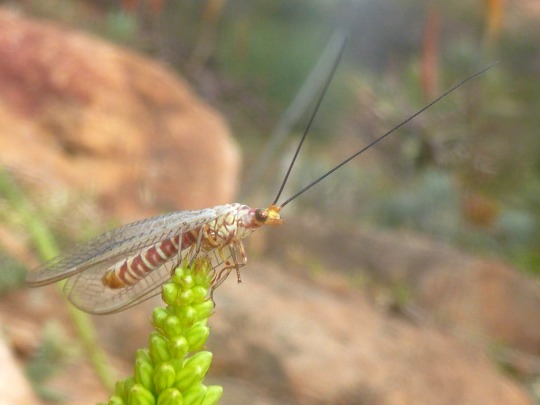
NEUROPTERA MOMENT 2 (Dysochrysa furcata above)
Family Chrysopidae - Green Lacewings
There are about ~1200 species of green lacewings distributed worldwide. The adults of most species are green with golden eyes. They have four venated approximately equal wings!
They have a wingspan ranging 6 to over 65mm (the bigger species are tropical). Lacewings of the Chrysopa genus are sometimes known as "stinkflies" because of their ability to produce a vile smell with a special gland.
Chrysopa nigricornis below
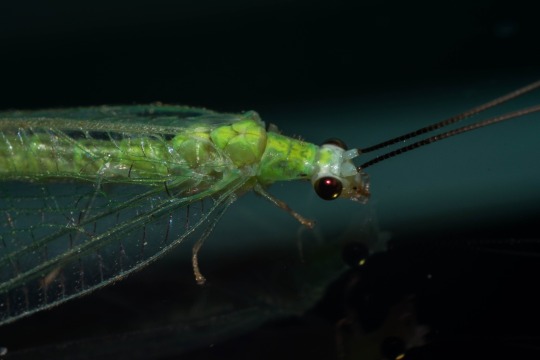
Adults are crepuscular or nocturnal and they feed on pollen and nectar but also aphids and mites, with some species being fully predatory like the lacewings of the Chrysopa genus.
Cool little fact: Adults that feed only on plant substances have special symbiotic bacteria inside some of their trachea that provide them with essential nutrients defficient from their diet.
They are usually found flying near grasses and shrubs and are especially attracted by flowers like cosmos, sunflowers, dandelions etc.
Lacewings have two different modes of hearing.
1. They have a tympanal organ at the base of each forewing which can even sense ultrasonic sounds. When they detect the low ultrasound calls of bats they cease flight and drop and while the bat appraoches, as its call's frequency increases, the lacewings takes it as signal to open it's wings an flap away quickly in an escape manouevre
2. They can also perceive low-frequency vibrations in the ground with special organs located inside their legs. During mating they produce different "courtship tremors" with their abdomen, therefore this type of hearing is important in reproduction. Songs are also species specific!!!
Chrysoperla lucasina (below)

The larvae are… of course… very fierce predators and also called “aphid lions”. They feed on other small insects, especially aphids and caterpillars and they don’t discriminate so they’ll feed on eachother too (thankfully, since their eggs are layed by females on hanging stalks they are out of reach from the hungry grasp of the newborns, so the still unhatched eggs are safe for a while).
A larva:

The larvae have weak senses, so they walk in a weird random manner and sway their heads from side to side hoping to bump into a possible meal, and when they hit anything, they grab it with their maxillae. They inject their prey with digestive enzymes and paralysing venom and can apparently dissolve the organs of aphids in about 90 seconds. Wild. Oh and of course, then they suck yum yum with their hollow maxillae! Afterwards, some use the remnants of their meal (the integuments of aphids mostly) to camouflage themselves and to detter predators!
Below: A larva camouflaging itself by carrying various debris
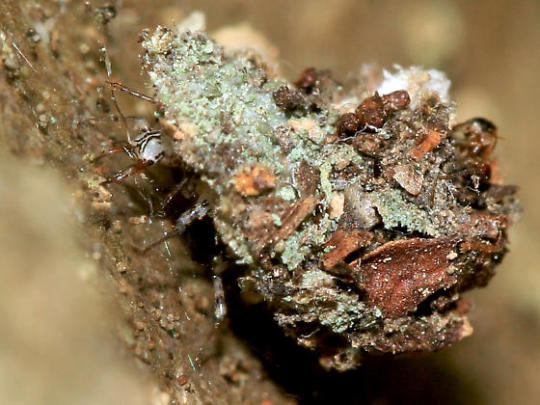
If they feed continuously for about two weeks they are ready to spin a cuccon in which they sit for about two weeks (some species overwinter however so they can sit inside for longer). Adults are short lived, about 4-6 weeks, but this needs checking.
Nothochrysa californica (below)

Also, green lacewings are often used in pest control!
That's it for now, it's almost 1:30AM something is wrong with me. No time to fact check rn fr
#insects#insect#this is the goodnight post#📗coolthingcompilation#insectblr#bugblr#neuroptera#green lacewing#the more you know#insect facts#biology#entomology#chrysopidae#net-wingged insects#infodump#notes#animals#animal#CUTE CUTE CUTE#lady gaga is keeping me so alive rn#I said I'll go eat a sandwich an hour ago but I fell in the rabbithole
13 notes
·
View notes